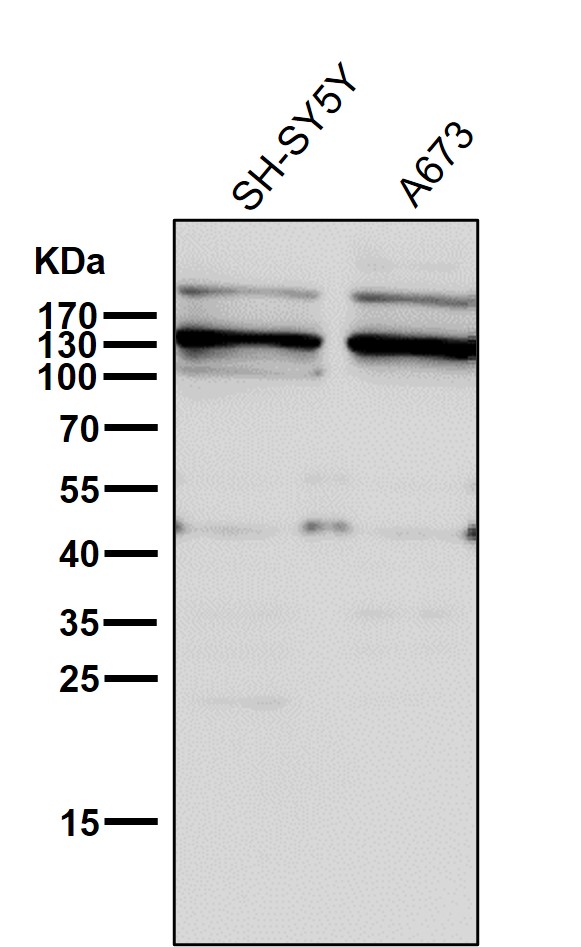
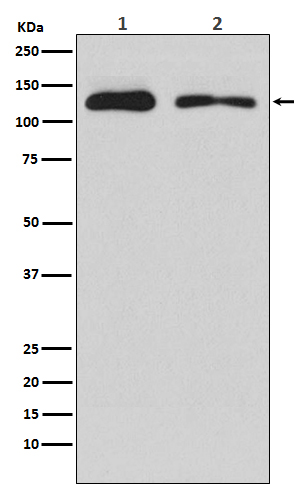
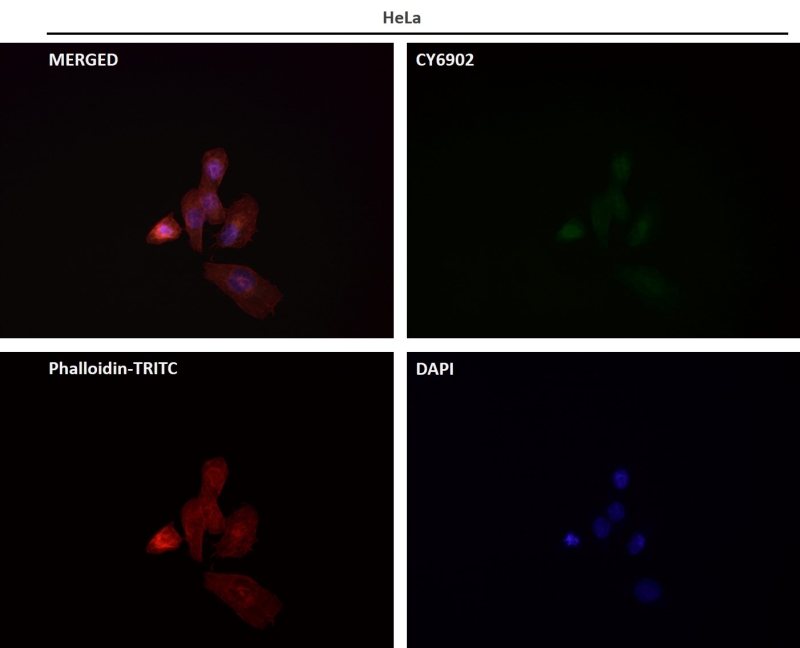
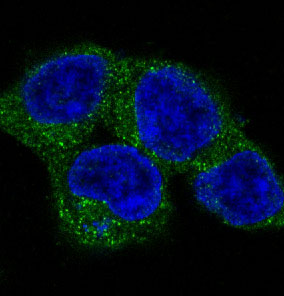
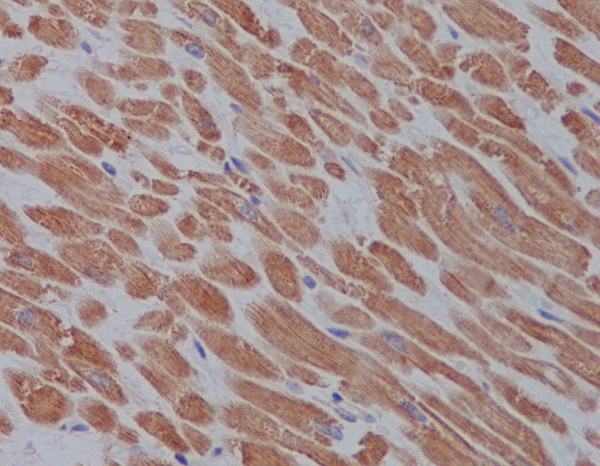
| WB | 1/1000-1/2000 | Human,Mouse,Rat |
| IF | 咨询技术 | Human,Mouse,Rat |
| IHC | IHC:1/100-1/200;IHF:1/50-1/200 | Human,Mouse,Rat |
| ICC | 1/50-1/200 | Human,Mouse,Rat |
| FCM | 咨询技术 | Human,Mouse,Rat |
| Elisa | 咨询技术 | Human,Mouse,Rat |
| Aliases | Serine/threonine-protein kinase ULK1; Autophagy-related protein 1 homolog; ATG1; Unc-51-like kinase 1; ULK1;;ULK1 |
| WB Predicted band size | Calculated MW: 113 kDa ; Observed MW: 120 kDa |
| Host/Isotype | Rabbit IgG |
| Antibody Type | Primary antibody |
| Storage | Store at 4°C short term. Aliquot and store at -20°C long term. Avoid freeze/thaw cycles. |
| Species Reactivity | Human,Mouse,Rat |
| Immunogen | A synthesized peptide derived from human ULK1 |
| Formulation | Purified antibody in PBS with 0.05% sodium azide,0.05% BSA and 50% glycerol. |
+ +
All lanes use the Antibody at 1:2K dilution for 1 hour at room temperature.
Western blot analysis of ULK1 expression in (1) HEK293 cell lysate; (2) PC12 cell lysate.
Immunofluorescent analysis using the Antibody at 1:100 dilution.
Immunofluorescent analysis of 293 cells, using ULK1 Antibody .
Immunohistochemical analysis of paraffin-embedded human heart, using ULK1 Antibody.
以下是关于ULK1抗体的3篇代表性文献,涵盖其功能研究及抗体应用:
1. **"Phosphorylation of ULK1 (hATG1) by AMP-activated protein kinase connects energy sensing to mitophagy"**
- **作者**: Kim J, Kundu M, Viollet B, Guan KL
- **摘要**: 该研究使用ULK1特异性抗体检测其在能量应激下的磷酸化状态,揭示了AMPK通过调控ULK1活性连接能量感应与线粒体自噬的分子机制。通过Western blot和免疫沉淀技术,验证了ULK1在代谢调控中的关键作用。
2. **"ULK1 induces autophagy by phosphorylating Beclin-1 and activating VPS34 lipid kinase"**
- **作者**: Egan DF, Shackelford DB, Mihaylova MM, et al.
- **摘要**: 研究利用ULK1抗体证明ULK1通过磷酸化Beclin-1激活VPS34复合体,从而启动自噬。抗体应用于免疫印迹分析,揭示了ULK1在自噬起始中的直接底物。
3. **"The ULK1 complex mediates MTORC1 signaling to the autophagy initiation machinery"**
- **作者**: Ganley IG, Lam H, Wang J, et al.
- **摘要**: 通过ULK1抗体研究mTORC1对ULK1复合体的调控,发现营养充足时mTORC1抑制ULK1活性,阻断自噬启动。实验采用免疫共沉淀技术解析复合体相互作用。
---
**备注**:上述文献均聚焦ULK1在自噬中的核心作用,抗体技术(如Western blot、免疫沉淀)用于分析其表达、磷酸化及蛋白互作。如需具体实验细节或更多应用场景(如免疫组化),可进一步检索靶向ULK1亚细胞定位或病理模型的研究。
The ULK1 (Unc-51 Like Autophagy Activating Kinase 1) antibody is a critical tool for studying autophagy, a cellular degradation process essential for maintaining homeostasis. ULK1. a serine/threonine kinase, initiates autophagy by forming a complex with ATG13. FIP200. and ATG101 under nutrient-deprived conditions. It acts downstream of mTOR (mechanistic target of rapamycin) and AMP-activated protein kinase (AMPK), which regulate its activity via phosphorylation. When mTOR is inhibited (e.g., during starvation), ULK1 is dephosphorylated, triggering autophagosome formation. Conversely, AMPK activates ULK1 under energy stress.
Antibodies targeting ULK1 are widely used to investigate its expression, post-translational modifications (e.g., phosphorylation at Ser317 or Ser757), and subcellular localization. These antibodies enable techniques like Western blotting, immunofluorescence, and immunoprecipitation, helping researchers dissect autophagy mechanisms in diseases such as cancer, neurodegeneration, and metabolic disorders. For example, ULK1 dysregulation is linked to tumor progression and resistance to therapy, making it a potential therapeutic target. However, challenges exist due to ULK1’s structural homology with ULK2 and cross-reactivity in some antibody batches. Validation using ULK1-knockout cell lines is critical to ensure specificity. Commercial ULK1 antibodies are available from multiple vendors, often differentiated by epitope recognition (e.g., N-terminal vs. C-terminal regions). Proper application of these antibodies enhances understanding of autophagy dynamics and its role in health and disease.
×